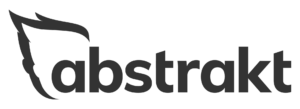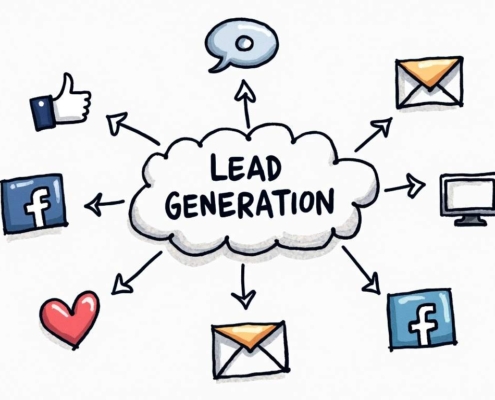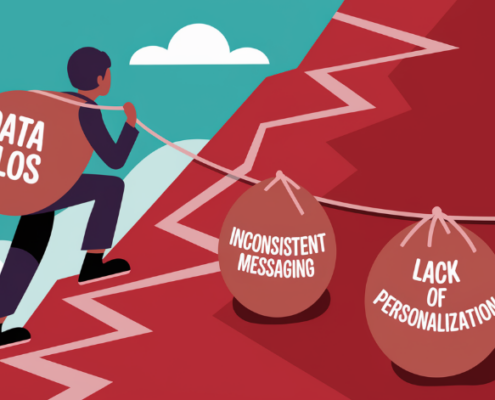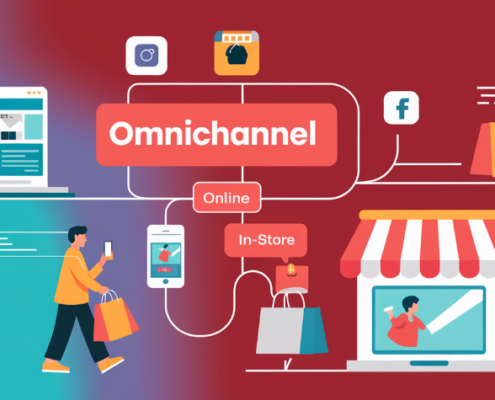
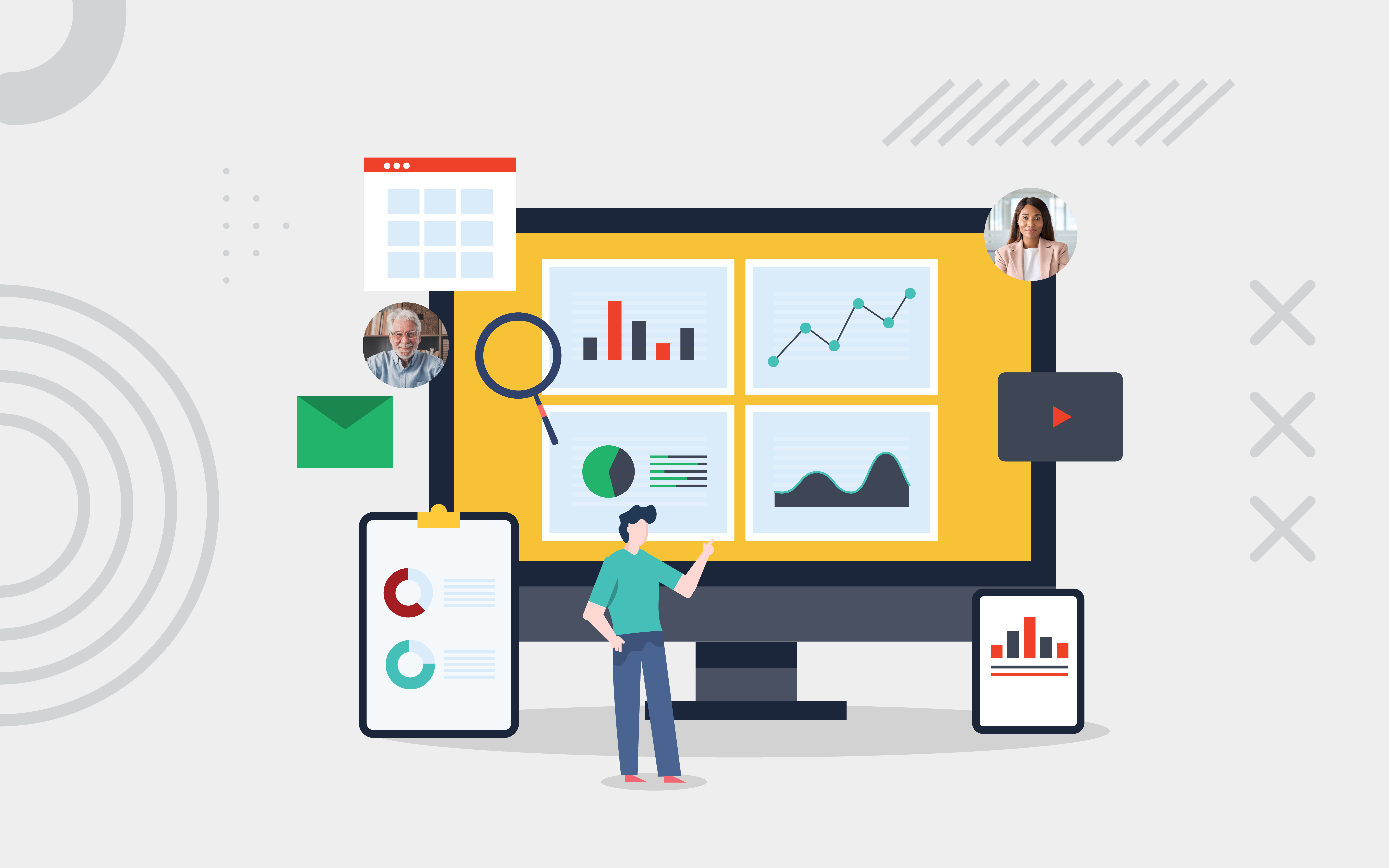
Struggling to turn meetings into closed deals? You’re not alone. In B2B marketing, setting appointments is only half the battle—the real challenge is converting those appointments into valuable opportunities. But what if there were strategies to consistently improve your conversion rates and maximize your sales efforts?
Keep reading and explore proven techniques to help you turn more appointments into successful outcomes, giving your business the competitive edge it needs. These include:
Refining Your Ideal Customer Profile
A misaligned appointment setting strategy is like trying to hit a target with your eyes closed—it’s nearly impossible. That’s what happens when you go in without defining a clear Ideal Customer Profile (ICP).
But how do you define your ICP? The first step to improving your B2B conversion rates is to sharpen your focus on who you’re targeting. Start by gathering your marketing and sales teams to analyze the traits of your most successful clients. What industries do they belong to? How big are their companies? What specific challenges do they face, and what’s their purchasing power?
If you already have an ICP, but it’s been a while since you last reviewed it, now’s the time to make sure it’s still in sync with your current business goals. Markets evolve, and so do customer needs. Your ICP should be a living, breathing document that reflects these changes. By refining your ICP, you can ensure that your appointment setting efforts are aimed at the right prospects, significantly increasing your chances of converting meetings into valuable business opportunities.
Using Buyer Personas to Personalize Your Outreach
Personalizing your outreach based on buyer personas is great for improving appointment setting conversion rates. Buyer personas offer detailed insights into your prospects, such as their roles, industries, challenges, and decision-making processes. With this information, you can craft messages that resonate with each prospect’s specific situation.
For instance, if you’re reaching out to a prospect in the early stages of research, focus on providing educational content that addresses their challenges and introduces potential solutions. This could be in the form of blog articles or ebooks that offer valuable insights. On the other hand, if the prospect is further along in their decision-making process, they might be more interested in detailed product comparisons or pricing guides.
By tailoring your outreach to match the prospect’s needs and stage in the buyer journey, you demonstrate that you understand their unique situation and are prepared to offer relevant, meaningful solutions. This personalized approach captures attention while increasing the likelihood of securing a successful appointment.
Stop wasting time on dead-end leads. Let us help you take your business to new heights with our B2B Appointment Setting services.
Practicing Onmi- and Multi-Channel Marketing
At this stage in B2B marketing, reaching prospects through multiple touchpoints is a must. Embracing both omnichannel and multi-channel marketing strategies ensures you’re not just seen but also remembered. By integrating various channels into your approach, you create a seamless experience that keeps your brand top-of-mind and significantly boosts your appointment setting conversion rates.
Omnichannel Marketing
Omnichannel marketing is like orchestrating a symphony where every instrument plays in harmony. It involves creating a unified experience across all touchpoints, whether it’s email, social media, or your website. The goal is to ensure that every interaction feels connected and consistent, no matter where the prospect engages with your brand.
This seamless approach helps build stronger relationships and trust with potential clients, making it easier for them to move forward in the appointment setting process. When prospects see a cohesive message and feel that their experience is personalized, they’re more likely to respond positively.
Multi-Channel Marketing
Multi-channel marketing, on the other hand, is about being present in as many places as possible. It’s like casting a wide net to catch different types of fish. By utilizing various channels such as email, social media, and direct mail, you increase your chances of reaching prospects where they are most active.
Each channel has its strengths, and by engaging across multiple platforms, you enhance your visibility and stay relevant. This approach also allows you to tailor your messages to different stages of the buyer’s journey, improving the likelihood of securing appointments by addressing prospects’ needs through their preferred channels.
Read More: All About Multi-Channel Prospecting
Remembering to Nurture Leads
Patience is often as important as persistence. Not every lead is ready to jump into a meeting right away, which is why lead nurturing is a critical part of improving your appointment setting conversion rates. As a matter of fact, at Abstrakt Marketing Group, 46% of our appointments come from the lead nurturing process—a testament to how effective this strategy can be.
Lead nurturing is about staying connected with your prospects over time, offering them valuable content that aligns with their needs and interests. This isn’t just about sending follow-up emails; it’s about building a relationship. By regularly providing industry insights, whitepapers, case studies, and educational webinars, you keep your brand on their radar and establish yourself as a trusted resource.
The key to successful lead nurturing is understanding that timing is everything. Some leads might be in the early stages of their buyer journey, gathering information and exploring options. By consistently delivering relevant content, you’re not just waiting for them to be ready—you’re actively helping them move toward that decision. And when they are finally prepared to take the next step, you’ll be the first company they think of.
Fine-Tuning Your Scripts and Templates
In B2B appointment setting, your calling scripts and email templates are like the blueprint to a well-built house. They need to be structured yet flexible, guiding your sales representatives while leaving room for natural conversation. A well-crafted script is both a checklist and a dynamic tool that should evolve based on the needs of your prospects and the ever-changing market landscape.
Your scripts should be clear, concise, and aligned with what buyers are looking for. They need to hit the right notes:
- Addressing Pain Points
- Showcasing Your Value Proposition
- Preemptively Tackling Common Objections
But remember, while a solid structure is crucial, rigidity can be a downfall. A script should empower your sales reps, not box them in. The best conversations flow naturally, so encourage flexibility in how your team uses these scripts.
It is essential to review and refine your scripts regularly. Gather feedback from your sales team about what works and what doesn’t, and use performance data to make informed adjustments. This ongoing process ensures that your scripts remain effective and relevant, helping you stay ahead of the curve in improving appointment-setting conversion rates.
Example of a Great Calling Script
Introduction: “Hi [Prospect’s Name], this is [Your Name] from [Your Company]. How are you today?”
Purpose: “I’m reaching out because I’ve been following [Prospect’s Company] and noticed that you’re doing some exciting things in [industry-specific context]. At [Your Company], we specialize in [briefly mention your product/service], and I believe we could offer some real value to help you achieve [specific goal related to their business].”
Value Proposition: “Our [product/service] has helped companies like [mention a relevant success story] by [highlight key benefits]. We’ve seen a [mention specific improvement or ROI] with clients in your industry, and I’d love to discuss how we could potentially do the same for you.”
Addressing Objections: “I completely understand if this isn’t the right time or if you have some reservations. A lot of our clients felt the same way initially. What they found, though, is that [address the specific objection with a counterpoint].”
Call to Action: “Would you be open to a quick 15-minute call next week to explore this further and see if it might be a good fit? I’m available on [suggest two or three time slots]. Does any of those work for you?”
Closing: “Thank you for your time, [Prospect’s Name]. I’ll send over a calendar invite as a placeholder, and we can confirm closer to the date. Have a great day!”
This script is designed as a starting point. It outlines the key points your sales team should cover but also leaves room for personalization and adaptation based on the conversation’s flow.
Trying to up your cold calling game? Abstrakt Marketing Group has a FREE cold calling talk track guide to help your SDRs stay on their game.
Example of an Email Template
Subject Line: “Helping [Prospect’s Company] Achieve [Specific Goal]”
Email Body: “Hi [Prospect’s Name],
I hope this message finds you well. My name is [Your Name], and I’m with [Your Company]. I’ve been following [Prospect’s Company] and am impressed by the strides you’re making in [industry-specific detail].
At [Your Company], we’ve helped businesses like yours achieve [specific result] through our [product/service]. For example, [mention a relevant case study or success story], which led to [specific improvement or ROI].
I believe there could be a strong alignment between what you’re looking to achieve and what we offer. I’d love to set up a brief call next week to discuss how we might be able to support [Prospect’s Company] in reaching its goals.
Would [suggest two or three time slots] work for you? I look forward to the opportunity to connect.
Best regards,
[Your Name]
[Your Title]
[Your Contact Information]”
This email template complements the calling script by reinforcing the key messages and providing another touchpoint for the prospect.
When your messages resonate, they’re more likely to convert into meaningful conversations—and, ultimately, successful appointments. Keep refining your approach, stay flexible, and always be ready to adapt to new insights and market shifts. This attention to detail will set you apart and significantly improve your appointment setting conversion rates.
Focusing on Relationship-Building
Beyond securing a spot on someone’s calendar, you’re building a foundation for a meaningful business relationship. Think of each interaction with a prospect as the start of a partnership, not just a transaction. When your focus is solely on closing the deal, it’s easy to come across as pushy or insincere. Instead, shift your approach to genuinely understanding and addressing the prospect’s needs.
Encourage your appointment setters to listen actively during conversations. By showing real interest in the prospect’s challenges, your team can offer solutions that feel more personalized and relevant. This approach builds rapport while positioning your company as a trusted advisor rather than just another vendor.
Empathy plays a crucial role in this process. Recognizing and acknowledging the difficulties your prospects are dealing with can make all the difference in how they perceive your outreach. When you take the time to understand their pain points and offer meaningful insights or suggestions, you create a sense of trust and credibility.
Building these relationships early on ensures that when it’s time to make a decision, your company stands out as the one that cares enough to listen and help, not just sell.
Understanding B2B Appointment Setting Vs. Cold Calling
When it comes to building relationships in the B2B world, there’s a major difference between appointment setting and cold calling. Think of cold calling as casting a wide net in the ocean, hoping to catch something. It’s more about volume and quick outreach—usually to contacts who may not even know your company. Appointment setting, on the other hand, is more like precision fishing. You’ve already identified a specific target, and your goal is to reel them in by scheduling a time to have a meaningful conversation.
Cold Calling: A Numbers Game
Cold calling is often used to introduce your business to prospects who may have never heard of you. It’s fast-paced and driven by numbers. Success comes from persistence—making dozens or even hundreds of calls a day to find that one prospect who might be interested. While it can yield some wins, cold calling is notorious for being time-consuming and challenging. It can feel like a shot in the dark, as many recipients won’t engage, making conversion rates lower compared to more focused approaches.
Appointment Setting: Targeted and Strategic
B2B appointment setting flips the script. Instead of pushing for immediate interest, you’re laying the groundwork for a deeper conversation. The goal is to identify high-quality leads, establish rapport, and schedule a specific time to discuss their needs and how your product or service can help. This is a more targeted approach where the quality of each interaction matters more than the quantity. By securing a dedicated time to speak with the decision-maker, you boost your chances of a productive and successful meeting.
In short, cold calling is about rapid-fire outreach, while appointment setting is more about building a relationship before diving into the sales process. Both have their place in B2B, but appointment setting tends to offer a higher conversion rate and deeper engagement.
Key Takeaways
Improving your appointment setting conversion rates requires a strategic approach and consistent effort. By refining your ideal customer profile, leveraging multi-channel marketing, and nurturing relationships with prospects, you can turn more meetings into closed deals.
For businesses looking to enhance their appointment setting process, Abstrakt Marketing Group offers B2B Appointment Setting services that build predictable sales pipelines and deliver high-quality sales opportunities. With over 1 million sales meetings booked, Abstrakt’s comprehensive approach ensures you capture the right leads at the right time, driving sustainable growth for your business. Connect with us today!
